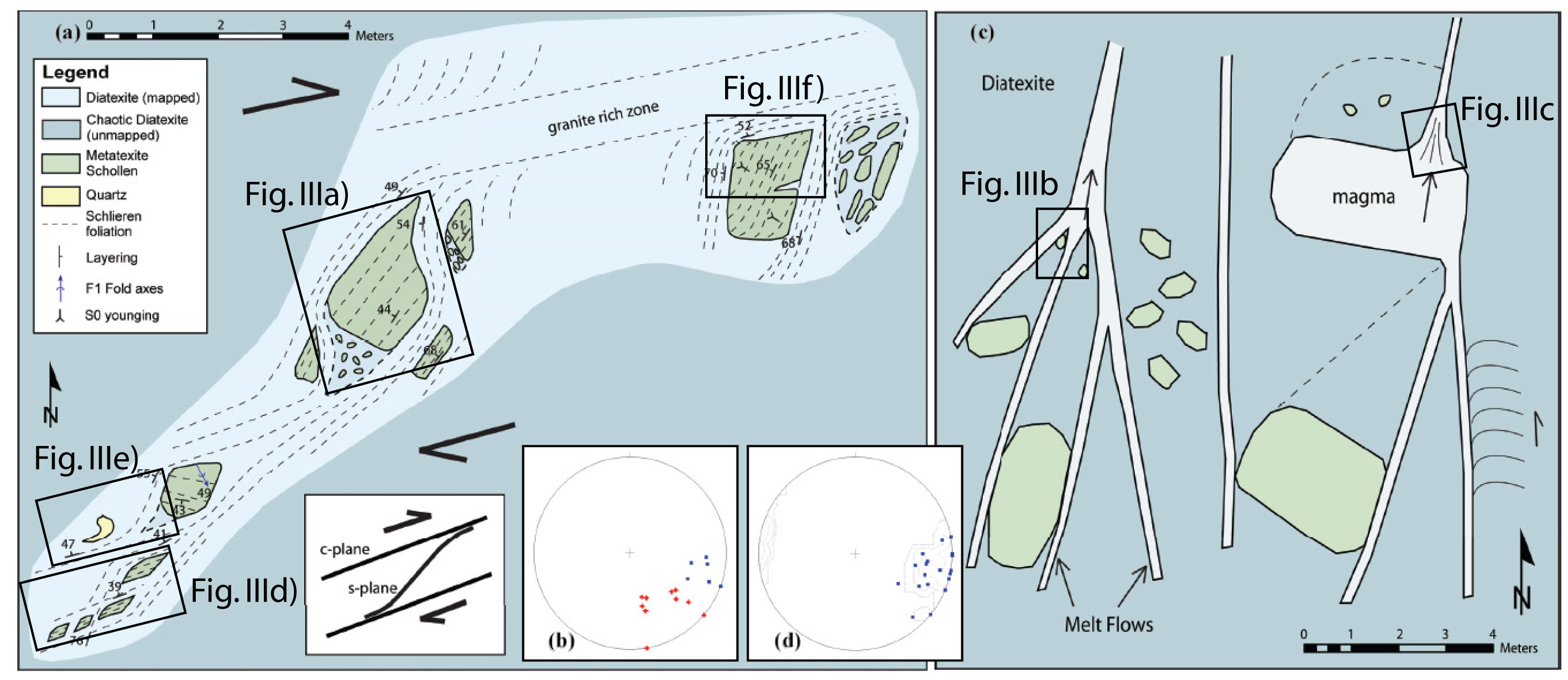Melt Flow, Transposition and Breakup of Enclaves in Delamerian Migmatites, Kangaroo Island, South Australia
|
Melt Flow, Transposition and Breakup of Enclaves in Delamerian Migmatites, Kangaroo Island, South Australia
|

|
| Figure 1 CENTRAL) Field sketch of sheared diatexite in Six Mile Lagoon. a) Dextral shearing on N60-70E of schollen preserved in magma-rich diatexite, b)Funnel-shaped N-directed channels draining magmas from same diatexite a few meters to the right (East) of (a). This outcrop has therefore two parallel processes occurring simultaneously during anatexis: dextral shearing on N70E and melt extraction through channels trending N-S. Boxes mark details shown on photographs. |
|
|
|
| Figure 9a) Block broken up in migmatite into smaller blocks along main magma channel orientation. | FIgure 9b) Same, not extruded block on the upper right corner. |